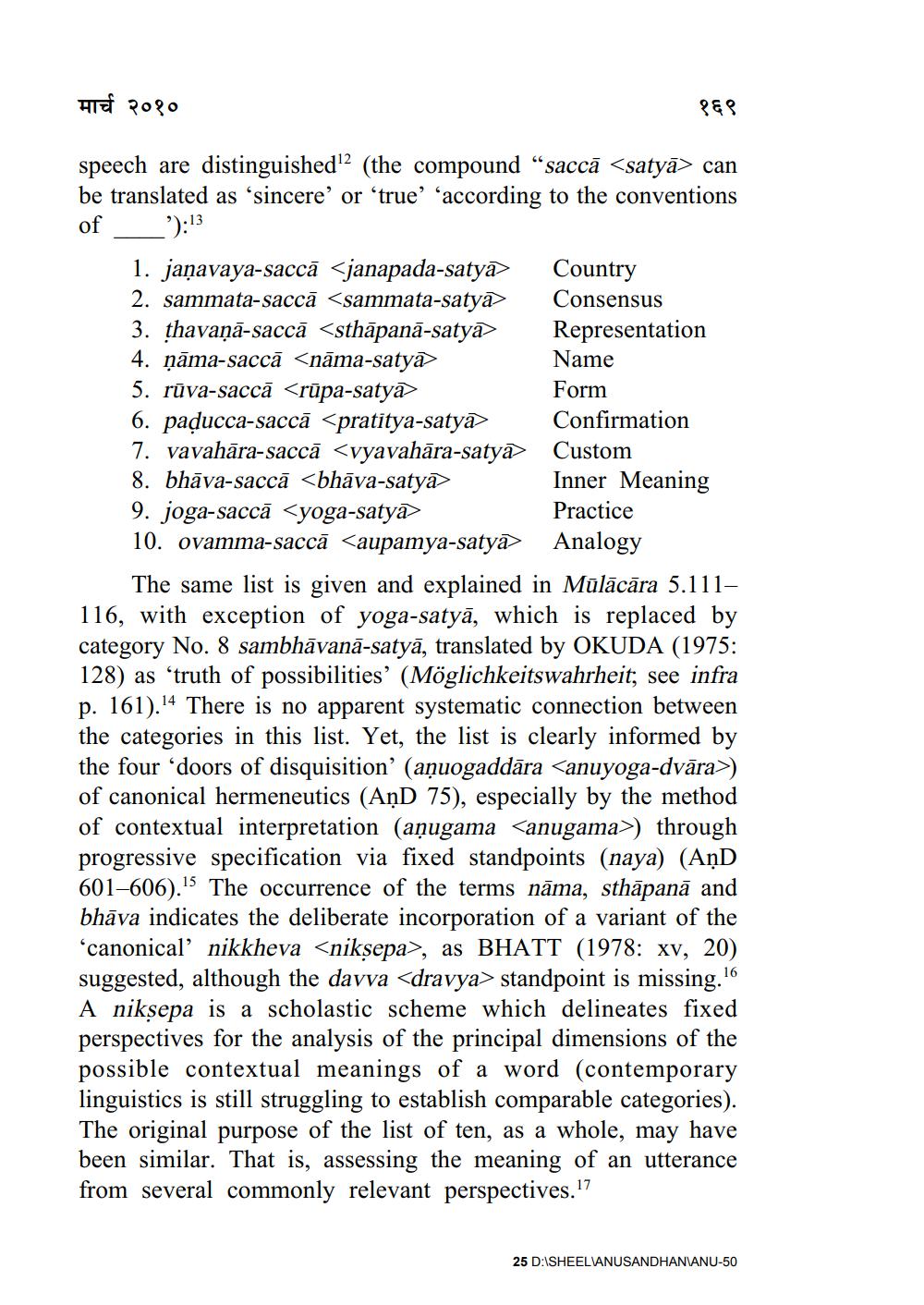________________
मार्च २०१०
१६९
speech are distinguished12 (the compound “saccă <satyā) can be translated as ‘sincere' or 'true' 'according to the conventions of ?):13
1. jaṇavaya-saccă <janapada-satyā Country 2. sammata-saccă <sammata-satya Consensus 3. thavaņā-saccā <sthāpanā-satyā Representation 4. ņāma-saccā <nāma-satyā
Name 5. rũva-sacca Krupa-satya>
Form 6. paducca-saccā <pratitya-satyā Confirmation 7. vavahāra-saccă <vyavahāra-satya Custom 8. bhāva-saccă <bhāva-satya
Inner Meaning 9. joga-saccā <yoga-satya
Practice 10. ovamma-saccā <aupamya-satya) Analogy
The same list is given and explained in Mülācāra 5.111– 116, with exception of yoga-satyā, which is replaced by category No. 8 sambhāvanā-satyā, translated by OKUDA (1975: 128) as 'truth of possibilities' (Möglichkeitswahrheit, see infra p. 161).14 There is no apparent systematic connection between the categories in this list. Yet, the list is clearly informed by the four doors of disquisition' (aņuogaddāra <anuyoga-dvāra>) of canonical hermeneutics (AņD 75), especially by the method of contextual interpretation (aņugama <anugama>) through progressive specification via fixed standpoints (naya) (AņD 601–606).15 The occurrence of the terms nāma, sthāpanā and bhāva indicates the deliberate incorporation of a variant of the ‘canonical' nikkheva <niksepa>, as BHATT (1978: xv, 20) suggested, although the davva <dravya> standpoint is missing. 16 A niksepa is a scholastic scheme which delineates fixed perspectives for the analysis of the principal dimensions of the possible contextual meanings of a word (contemporary linguistics is still struggling to establish comparable categories). The original purpose of the list of ten, as a whole, may have been similar. That is, assessing the meaning of an utterance from several commonly relevant perspectives. 17
25 D: SHEELANUSANDHAN ANU-50




